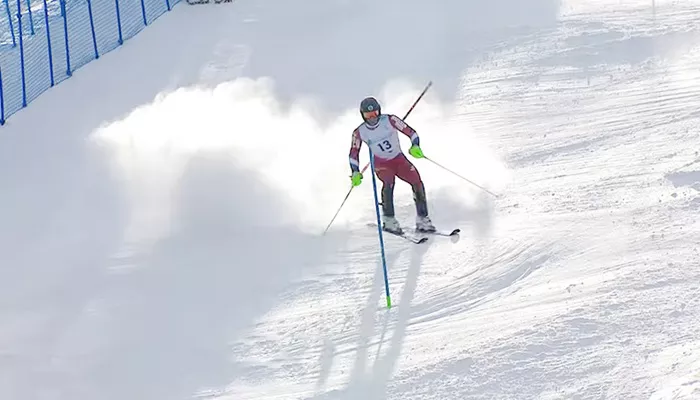Alpine skiing is one of the most exhilarating sports in the world, with disciplines that push the limits of speed, agility, and technical skill. Among these, Super-G (Super Giant Slalom) and Downhill skiing are two of the most thrilling events, often capturing the attention of winter sports enthusiasts. While both disciplines emphasize speed, they have key differences in course design, rules, technique, and equipment.
In this article, we will delve into the distinctions between Super-G and Downhill skiing, examining the unique characteristics of each discipline.
Understanding Alpine Skiing Disciplines
Alpine skiing consists of multiple disciplines, categorized based on the balance between speed and technical elements:
Slalom (SL) – The most technical event with the shortest turns.
Giant Slalom (GS) – Slightly longer turns than slalom but still highly technical.
Super-G (Super Giant Slalom) – A speed-oriented race with some technical aspects.
Downhill – The fastest and most extreme of all alpine ski racing disciplines.
Super-G and Downhill fall under the speed skiing category, prioritizing high velocities over technical turns.
What Is Super-G?
1. Course Design and Layout
Super-G is a speed event that combines elements of both giant slalom and downhill skiing. The course layout includes wider turns than downhill but is less technical than giant slalom. Skiers navigate through gate sets, which force them to make precise turns at high speeds.
Vertical drop: 350–650 meters (1,150–2,130 feet) for men, 350–600 meters (1,150–1,970 feet) for women.
Course length: Shorter than Downhill but longer than Giant Slalom.
Number of gates: Fewer than Giant Slalom, more than Downhill.
Start altitude: Lower than Downhill to balance speed and control.
2. Race Rules and Timing
Unlike Downhill, Super-G does not include practice runs. Skiers inspect the course but get only one race attempt.
Gates are set further apart than in giant slalom but closer than in Downhill.
Speed range: 80-110 km/h (50-68 mph).
3. Techniques Used in Super-G
Skiers use high-speed carving to maintain control while maximizing velocity.
Turns require a balance between aggression and precision.
Strong edge control is necessary due to the rapid direction changes.
4. Equipment Used in Super-G
Skis: Longer than giant slalom skis but shorter than downhill skis (about 200-210 cm for men, 190-205 cm for women).
Boots: Stiff for optimal power transmission.
Protective gear: Helmets, padded suits, and shin guards for safety.
What Is Downhill Skiing?
1. Course Design and Layout
Downhill is the ultimate speed discipline in alpine skiing, designed to test a skier’s ability to handle extreme velocities over long distances. The course is the most direct and least technical, allowing competitors to reach top speeds.
Vertical drop: 450–1,000 meters (1,480–3,280 feet) for men, 450–800 meters (1,480–2,620 feet) for women.
Course length: Longest of all alpine skiing disciplines.
Number of gates: Fewer than in Super-G to minimize turns.
Start altitude: Highest among all disciplines to maximize speed.
2. Race Rules and Timing
Unlike Super-G, skiers get multiple practice runs before the official race.
Speed range: 100-160 km/h (62-100 mph).
Features: Downhill courses include jumps, compressions, and long straightaways that require excellent aerodynamics.
3. Techniques Used in Downhill
Skiers focus on aerodynamics, maintaining a tucked position to reduce air resistance.
Turns are minimal and executed with precision to avoid losing speed.
Requires extreme confidence and fearlessness, as crashes can be severe.
4. Equipment Used in Downhill
Skis: Longest in alpine racing (about 215-218 cm for men, 205-210 cm for women).
Boots: Rigid and designed for stability at high speeds.
Protective gear: Includes helmets, back protectors, and aerodynamic suits.
Key Differences Between Super-G and Downhill
| Feature | Super-G | Downhill |
| Course length | Shorter than Downhill | Longest in alpine skiing |
| Speed range | 80-110 km/h (50-68 mph) | 100-160 km/h (62-100 mph) |
| Number of gates | More than Downhill | Fewer than Super-G |
| Vertical drop | 350-650m (men), 350-600m (women) | 450-1000m (men), 450-800m (women) |
| Practice runs | No practice runs, only course inspection | Multiple practice runs allowed |
| Technique | Carving turns at high speed | Aerodynamic tuck for maximum speed |
| Ski length | Medium-length (200-210 cm for men, 190-205 cm for women) | Longest (215-218 cm for men, 205-210 cm for women) |
Which Discipline Is More Challenging?
Both disciplines demand exceptional skill, physical conditioning, and mental toughness, but in different ways:
Super-G requires technical precision due to tighter turns and no practice runs.
Downhill demands extreme courage as speeds exceed 100 mph with minimal turning.
Conclusion
Super-G and Downhill skiing are both high-speed alpine disciplines that test a skier’s ability to handle velocity and challenging terrain. While Super-G combines speed with technical elements, Downhill is the ultimate test of pure speed and aerodynamics.
Whether you’re a skiing enthusiast, a professional racer, or a fan of winter sports, understanding the differences between these two disciplines enhances your appreciation for the skill and bravery required to compete at the highest level.

